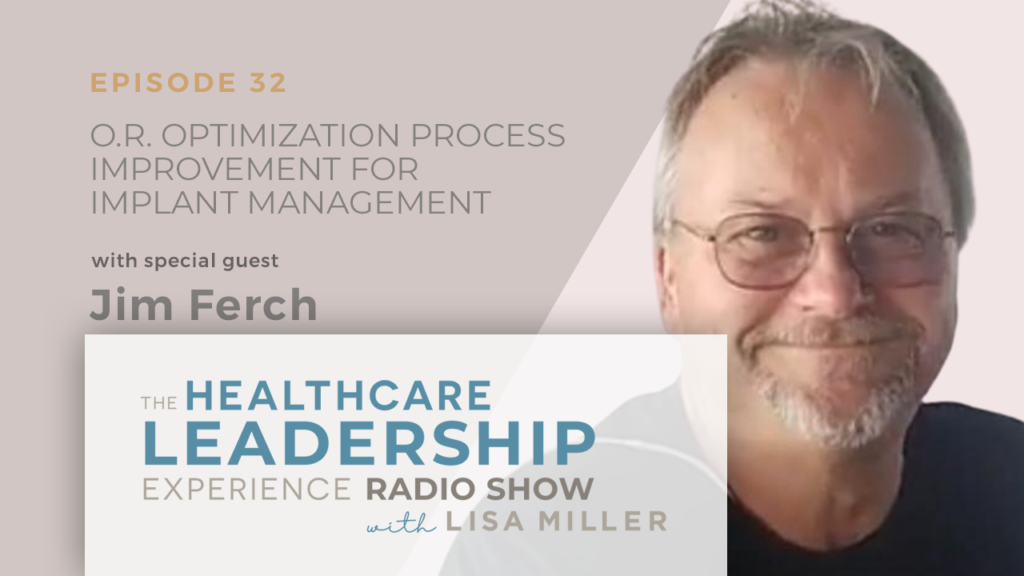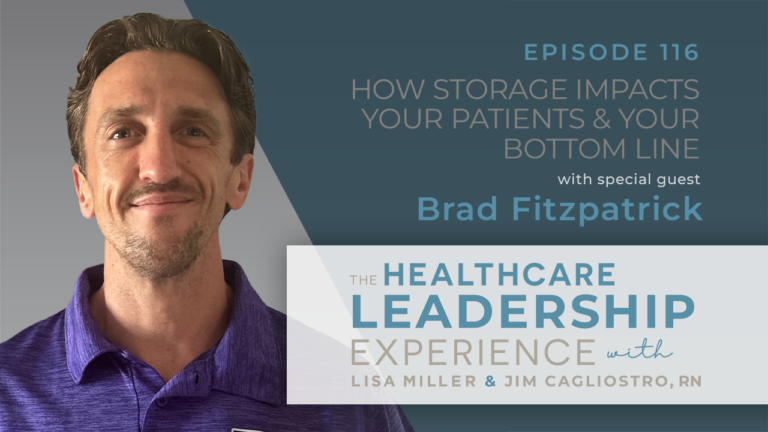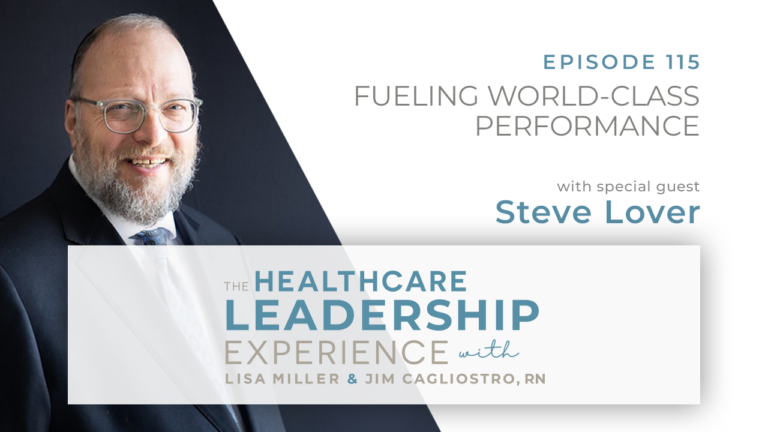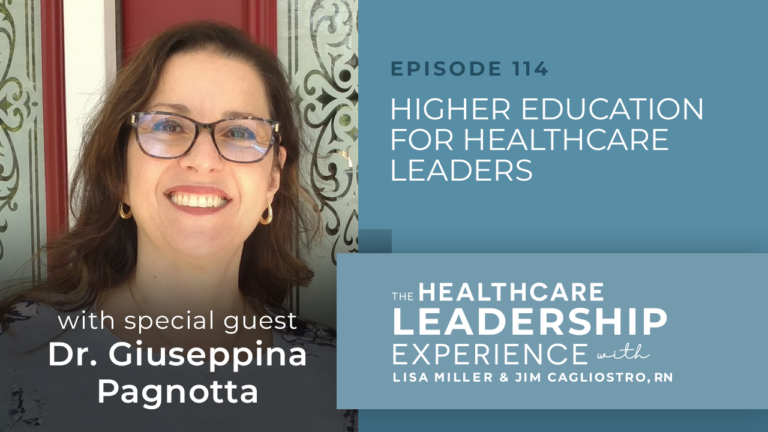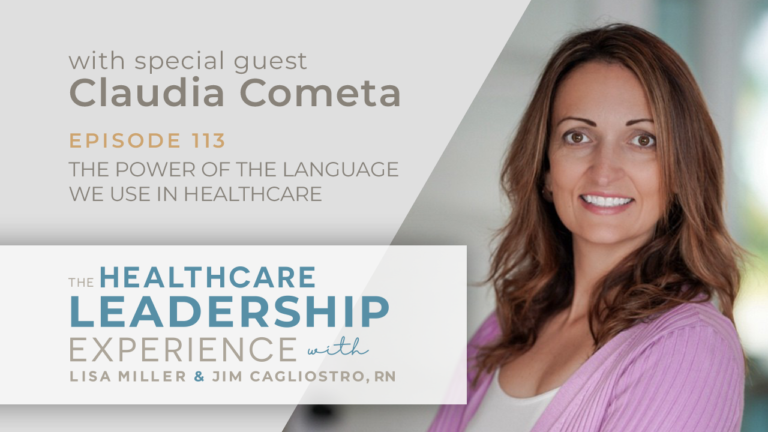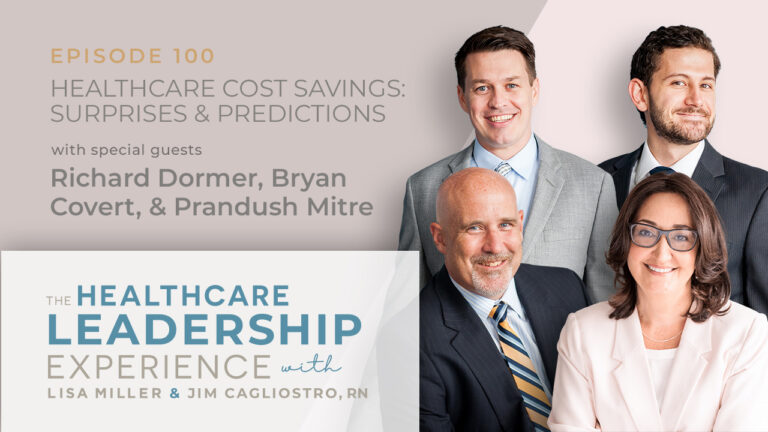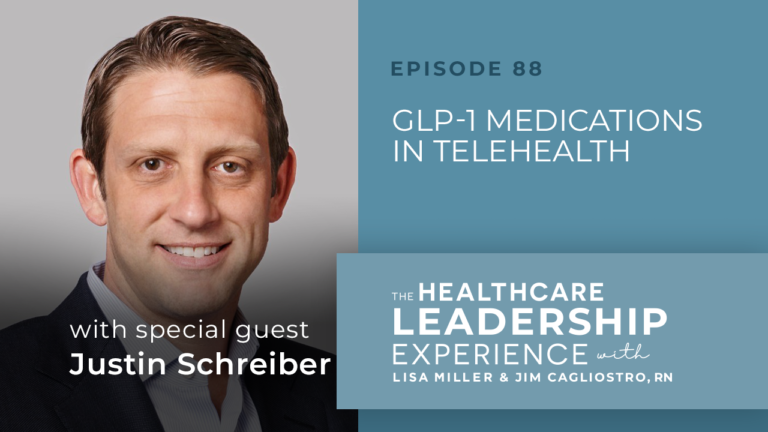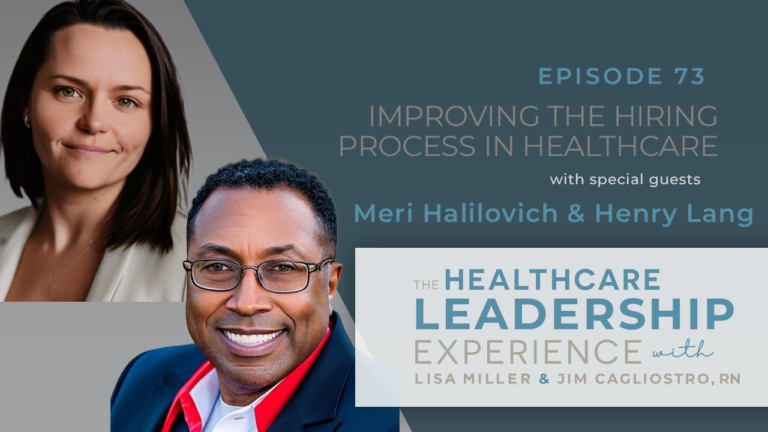In this episode, Lisa is joined by Jim Ferch, founder and CEO of Simplify OR, to discuss streamlining O.R. optimization processes, bill-only management and the high cost of implants.
In this episode:
Jim’s background in lean/supply chain and healthcare.
Simplify O.R’s automated implant documentation and streamlined revenue processes.
The hospital silos that lead to 23 touch points in a manual process for each implant case.
Why the OR offers hospital CFOs the greatest cost savings opportunities in 2022.
How Simplify OR ensures vendor contract compliance, patient account charging and charging compliance. The benefits of automation and the positive impact on patient care
CLICK HERE TO DOWNLOAD THE PDF TRANSCRIPT
Connect with Lisa:
📧 lmiller@spendmend.com
📱https://www.linkedin.com/in/lisamiller/
CLICK HERE TO OPEN THE TRANSCRIPT
Speaker 1 (00:02):
Welcome to The Healthcare Leadership Experience Radio Show with your host, Lisa Miller. Lisa is an entrepreneur, inventor, advisor, and founder of VIE Healthcare Consulting, the leading healthcare advisory and analystics firm helping hospitals accelerate their margin improvement goals. Lisa loves to think differently, and collaborates with leaders and their teams to solve challenges, and to create new innovative approaches that impact the clinical and business side of healthcare.
Speaker 1 (00:30):
Our show will bring you leaders and innovators within healthcare, and across multiple industries. Be a part of the discussion that will you a unique perspective, deep insights, and roadmaps to successfully help you navigate the clinical, financial, and operations of healthcare. Your show starts now.
Lisa Miller (00:49):
Hello, you’re listening to the Healthcare Leadership Experience on HealthcareNOW Radio. I’m your host, Lisa Miller. Welcome to the show. Today, I’m here with Jim Ferch, founder and CEO of Simplify OR, and we are going to have a fascinating conversation about all things OR, bill only management, high cost implants. And probably one of the most exciting technologies that I’ve seen in years, and had the opportunity to talk with Jim a few times, and see what he’s working on, and I think he’s really on, uh, the cutting edge of helping hospitals manage implants, and bill only. So Jim, welcome to the show.
Jim Ferch (01:34):
Thank you, Lisa, I appreciate your time today.
Lisa Miller (01:36):
Great. So, I think how we can kick this off is if you can tell everyone about who you are, like your career journey, which I think… When I learned about you, was so interesting because I think it’s just a combination of your ex- career, your experiences that really led you to develop such an important piece of technology that’s part of some great services to, uh, the ORs and for hospitals throughout the country. So can you share your career journey with us?
Jim Ferch (02:08):
I sure can. So, I’m wanna date myself a little bit here, Lisa. Do you remember the dictation tank line by Dictaphone?
Lisa Miller (02:14):
(laughs) Yes, I do. (laughs)
Jim Ferch (02:16):
I used to be the production planner for that in Auburn, Florida. And, uh, there’s where I really started my lean/supply chain journey and really developed just in time techniques for manufacturing the, the tank line for Dictaphone there. From there, I moved over to Rockwell Collins, and I bought custom logic semi-conductors. And I thought “great, I’m moving into purchasing, this is high tech.” And when I got into purchasing they batch, uh, remember AS400?
Lisa Miller (02:43):
Yes, I do.
Jim Ferch (02:45):
Weekly we batch our AS400 for purchase requisitions. So on Monday morning, everybody got a stack about a foot thick of requisitions triplicate, and the goal was to either place them or canceling by weekend. So I thought as a custom logic buyer, that’s not what I wanted to do. So I took home the AS400 basic programming logic book and taught myself how to code on AS400, and in three, three months, I automated my purchasing process. So when I came in Monday morning, I had one slip of paper on my desk instead of a stack of foot thick. That really had a couple exceptions I had to fix in the item master file for SOS Out and I was done purchasing by like 830 on Monday morning.
Jim Ferch (03:25):
So from there, I moved into another industry Aftermarket Automotive up in Northern Alabama. And we went from a push system to a pull system on SAP and my supply base through to my distribution centers. We had two distribution centers where we pushed out about $180 million annually, in aftermarket automotive parts. I developed a, uh, Demand Driven Scheduling module. So all the work centers, we knew what the demand was, we knew what our average throughput was, and the supervisors could walk around the shop and the… Allocate employees were needed, and, uh, that really helped, uh, show visibility of the demand on the pole system.
Jim Ferch (04:03):
From there, I moved into Rexnord, I was a corporate supply chain guy with a team of, of five individuals, uh, Six Sigma lean guys, and we went out and took March of quality delivery and cost improve processes for the Rexnord facilities. And, uh, we implemented a software there that, uh, streamlined the order to manufacture process, which I thought was great because it really just streamlined everything and made it nice and smooth. And that’s where I started actually looking at healthcare and I moved in to, uh, purchasing role director of supply chain for a health care system in Northern Alabama. That’s where I really started to understand the procurement side of health care if you will, you know we have GPOs where we manage our contracts for med surge supplies. A lot of IDMs and, um, hospital networks out there manage their implant contracts independent perhaps of those contracts. But I think a main sticker for everybody, or a pain point for everybody, Lisa, is how we document implant cases.
Lisa Miller (05:08):
So I just want to take a step back for a minute, because this is such the classic case of intrapreneurship. And, and it’s a topic that I really love, because there’s so many entrepreneurs within organizations that really move their organization to a next level, whether for process, or ensuring any kind of leakage. And these, these are the kind of things that we want to encourage people to do to be entrepreneurs to, but to do that in organization. And later on this year, we’re going to be doing a larger segment on entrepreneurship, which I think the innovation and creativity, and the willingness of leadership to say, “here’s some money, go through some of your challenges and create some things,” I think, could have some of the biggest gains for hospitals.
Lisa Miller (05:58):
So I just love your story because you are true, you are an intrapreneur. And obviously, you’re an entrepreneur as well, but entrepreneurs solve problems and challenges and you’ve just, it’s so fascinating that every place you’ve been, you’ve been able to see a bottleneck, you’ve been able to see a manual process. Things that take so much time that are tactical, not strategic, and, and figure out a way, using technology and smart processes to like, you know, instead of spending days, you’ve shrunk it to hours. And that’s what we want to do we want, and we want to encourage our people who are on the front lines to do that as well. So this is why I was so excited today, and the OR is a passion of mine, high cost implants bill only. That’s the work that we work in day in and day out, helping our hospitals save money, it’s an enormous pain point. So why did you start or why did you build, Simplify OR? If you can kind of go through your story about you know why? And maybe just roll right into what is Simplify OR? What, why that solution is different and unique and can help hospitals?
Jim Ferch (07:07):
Yeah, yeah great question. Thank you. So like I said, I was supervisor and director at a health care system for about 13 years. Daily, we had issues relative to chasing charge numbers, cases being done outside of implant contract costs, and just daily conversations trying to get peels back to vendor reps. And the process is very, very fragmented and siloed. We have materials management systems in healthcare, we have electronic medical records in healthcare, we have implant vendor contracts, and today, none of those are connected, Lisa. They’re all siloed systems, so when I… You know, from my background, I looked at that process, and then I went to the marketplace trying to find something that solved the interoperability problems that we have between implant vendor contracts, materials management systems, and EMRs.
Jim Ferch (08:02):
And there were some fragmented software solutions out there, but they didn’t solve the whole problem. And I think I have a unique experience on it, Lisa. I’m not a domain expert in health care, but I, I think of myself as a domain expert, relative to implant documentation and implant revenue streams. So taking my, uh, software background and, and loving to automate things, I looked at the implant documentation and implant revenue stream and automated it. So in today’s world, in a Value Stream Map in today’s world, if that implants not on contract, not in the item master, not in the charge master file, that can be up to 23 touch points between three departments and five individuals that really have to look at that piece of paper to get it right for that implant case, okay?
Jim Ferch (08:55):
Now the deal is with implants is they’re very, very, uh, random usage. You know, tip, it’s not any, uh, preference card. These items are used randomly to fix you know, if it’s a broken bone or if it’s a new replacement, or even over in the cath lab, if it’s a pacemaker or an ICD or a stent or a wire, or, uh, you know, in women’s center for certain implants. So, when I looked at the process today, and hospitals spend between I think 65% and 75% of their expenses go towards implants. Again, whether it’s in the cath lab, the OR, the Women’s Center, and it’s managed on slips of paper with stickers.
Jim Ferch (09:36):
So you know, when a case is completed, a circulating nurse takes those stickers who runs over to the computer and in the OR, that was… The case was just completed, and documents the charting information for those implants for that patient account. Then she takes that slip of paper, and she puts it in the inbox for the charge nurse of that OR. Now if you go and look at the inbox for that charge nurse, typically it’s, it’s thick with implant documentation that needs to be completed. The problem the charge nurse has is, when she gets that implant right up, she needs to look in the charge master file, find the right charge number for that implant, click on it, to charge that patient correctly. And that’s just one big task, you know, for the charging us to go through that process.
Jim Ferch (10:24):
Now, when that piece of paper, that implant write-up makes it over to purchasing, purchasing needs to review that manual piece of paper with those stickers, and identify in the contract the right contract pricing to be able to then create appeal in the Materials Management System. So I talked about, you know, 23 touch points between three departments, and really four or five people need to touch that piece of paper to get it right every time. What my process does, or what my platform does is we’ve automated all those processes. So all those manual touch points, we’ve created logic in the back-end of our web application for that hospital.
Jim Ferch (11:01):
So literally, when the circulating nurse in the room, taps approve on the app, we’ve automated all those manual touch points, to be able to then take that information and automatically update the patient account charges, automatically update the patient account chart, and automatically create appeal in the hospital’s materials management system. So pending the level of automation that, that provider wants to get to, we can automate the complete process for them now. And I think my domain experience as a supply chain guide our healthcare system, I saw all the pain points every day that everybody had. Patient financial services, circulating nurses, charge nurses, our OR directors, certainly my CFO, Patient Financial Services, the vendor reps that have to chase POs at the end of the case, and the, the contracts person in a, in a purchasing. So I’ve taken a, a really cumbersome manual silo process, that created interoperability between, uh, implant vendor contracts, the materials management system for that healthcare system, and the EMR for the healthcare system to completely automate implant documentation for them.
Lisa Miller (12:13):
So I’m going to jump in for a minute, because you’ve said so many amazing things. And I’ve had, again, the opportunity to kind of talk through what you’re working on. And I think there’s a couple of aspects to this, because I actually don’t know if the C Suite CFOs know how many problems exist with this bill only management process. And I think they probably heard, you know, there’s some, some things going on, and, and maybe discussions about how, you know, it’s being worked on, it’s covered, no we’ve got systems in place to ensure charge capture. There’s ways to kind of audit that and review it, but there’s a couple of things going on.
Lisa Miller (12:51):
One is anything that’s this manual that has 23 touch points it’s going to have errors. It’s going to have issues, leakage, some problems, that’s just human nature, we can’t have that much manual processes and just not have issues. And second is I- I actually think the problem whenever we’re working in a hospital is much bigger than what is thought of from the C Suite or from leadership. And whether that’s, you know, miscellaneous coding in the CDM for new items, if you’ve got capitated implants, and some of those implants may or may not be used in a case, how do you track them off contracts, Ben? You talked a lot about it, we talked a lot about it, is a huge problem.
Lisa Miller (13:35):
You know, if I’m walking into 2022, and I’m a CFO, and I’ve got to pull some levers to see what’s the biggest lever for margin improvement, I’m going right to the OR, I’m going right to my implants to this 55% to 65% of my expenses, and I am tightening up that process. I’m tightening up the costs, the process for charge capture, everything you’re going to be speaking about in more detail. I… That would be my number one place.
Lisa Miller (14:03):
So if you’re just tuning in, you’re listening to The Healthcare Leadership Experience Radio Show on Healthcare Now Radio, and I’m Lisa Miller, your host. Today I’m joined with Jim Ferch, he is the founder and CEO of Simplify OR. We’re having a great conversation about OR processes and bill only management, and implant cost. And the show is sponsored by VIE Healthcare Consulting, the leading healthcare advisory and analytics firm helping hospitals accelerate their margin improvement goals. VIE has collaborated with healthcare leaders and their teams to accelerate their strategic initiatives and improve their financial performance since 1999. You can learn more about VIE Healthcare and viehealthcare.com.
Lisa Miller (14:46):
So Jim, I want to talk a little bit about the, you know, return on investment or the investment piece because hospitals here capital technology, they hear costs, they think “okay, we’ve just come out of some pretty heavy times with the pandemic. And you know, now we’re kind of in a situation again, and we really kind of have to punt any new investments.” You know, I’m a big believer in self-funded investments or investments that you prove their performance based or there’s a really proven ROI. So can you talk about the return on this investment?
Jim Ferch (15:19):
I sure can, thanks. So in today’s world, you could have anywhere from 10 to 25, different implant manufacturers and implant manufacturers reps, visiting your ORs, or your cath labs, or your women’s center every month. Each one of those vendor reps have their own way of documenting, uh, a case and, and providing that to your hospital to wade through and charge it correctly, and ensure that you’re, uh, creating a PL to your contract pricing. So what we’ve done, Lisa, is we’ve created a provider driven implant revenue process that ensures implant vendor contract compliance, patient account charging and charging compliance.
Jim Ferch (16:01):
There’s no manual touch points in our process today, where you mentioned earlier, you know, we can have meetings, we can look at processes, but over time, those manual processes tend to lacks in ways that aren’t, uh, 100% achieving their goal. When you put a solution in place, like Simplify OR, we’ve actually looked at all the workflows for implant documentation and created automatic workflows to be able to document those cases correctly, and get invoices from manufacturers that actually match our peel file, which is contract pricing.
Jim Ferch (16:38):
So if you look at an ROI with Simplify OR, I talked earlier about a circulating nurse running over to the computer, spending time in that surgery suite, updating the patient account chart, right? Let’s say that takes five to 10 minutes, then she walks up to the charge nurse desk and she hands that implant write-up off to the charge nurse who spends all day doing nothing but looking up charge numbers, calling purchasing for charge number purchasing, calling the vendor app saying “hey, this isn’t the contract pricing.” Patient financial services having to create charge numbers, all those manual steps take time.
Jim Ferch (17:18):
So before I even built this platform, I reviewed a month’s worth of orthopedic cases. And what I found, Lisa, is there was huge gaps relative to what was actually those stickers on that implant write-up, compared to how that patient account got charged. And there was also gaps relative to what the vendor rep put down on pricing for that implant case versus our contract pricing. So I would say there’s, you know, the opportunity when you use my platform is you, you’re ensuring implant vendor contract compliance, and you’re ensuring that every implant that gets implanted into that patient, again, whether it’s the cath lab, the Women’s Center, or the DLR, you’re documenting that case, to the correct charge number, and ensuring that you’re capturing all the billable charges for that case.
Lisa Miller (18:14):
So I have a couple of thoughts on that. And, and the ROI, just, you know, whether that’s a, a 10% improvement, 15% improvement, I mean, it could be an improvement on leakage in terms of revenue leakage, or missed cost savings, because you’re off contract or not getting the right pricing. I mean, there’s just, there’s so many ways to kind of pull together an ROI or opportunities, I certainly feel like this is again, you know, an area as we started 2022, that it should be audited. You- you know, hospital leaders should really kind of, you know, whether you can do that internally, or you want to bring on a company like VIE, we can help kind of audit that process to see where those gaps are. And certainly, you know, working with you, Jim, on understanding how a proven technology based on a, on an audit can really improve and close those gaps.
Lisa Miller (19:07):
So you know, I think that’s really important, because proven technology will help us as we have staffing issues, as the margin constraints continue to kind of challenge us. And, you know, this is an area where you can really, you know, hospitals can really gain some leverage. So I’d be interested in hearing from you some feedback, some of your clients give to you, you know, just different things that you might hear. I’m sure, you know, there’s a relief, you know, not having to do as much paperwork or this is all done in the backend. I mean, you know, can you give me some of your frontline experience on what those users say to you once this is put in place in a hospital?
Jim Ferch (19:46):
Yeah, yeah. It’s wonderful feedback, and I think one of the rewards of building this is hearing that feedback. It’s really, uh, great to hear you know, the nursing staff talk about you know, patient care, instead of documenting implant cases. It’s wonderful to, uh, you know, for my supply chain folks not to be arguing with vendor reps over costs for implants that were put in last week, right? So all those manual touch points are, are really benefit the charge nurses, the circulating nurses. Um, because they’re not spending that time documenting cases, they can spend that time with more orthopedic cases, more implant cases.
Jim Ferch (20:28):
And on the flip side of that, Lisa, most of the distributors for implants have phone calls weekly with their regional sales reps. And the reps that used our platform loved it, because as soon as the case was completed, when the nurse approved the case, on the application, we automatically send a CSV file to the vendor, or the distributor, or both with the case usage and the contract costs. So there’s no, there’s no arguing back and forth anymore relative to pricing, because like I mentioned earlier, it’s a provider driven process now, it’s not driven by implant manufacturers and implant vendor reps. So it’s a standardized process that streamlines implant documentation and implant revenue streams. It really takes the burden, I, I would say, off of the charge nurses and circulating nurses to do it right every time. Because we literally had meetings every month, and reviewed implant write-ups to patient account charges, and implant write-ups to POS and invoices. Like you would do when you go in and do an audit, right? So I think from a hospital perspective, we loved it, because we took all those manual processes, and we automated them to really yield back the time in documenting cases back to the providers where they can focus on patient care.
Lisa Miller (21:53):
Yeah, and I love the provider-driven process. So you know, for us at VIE, we talk a lot about on the purchase services side that because it’s so hard to get to the line item data that’s on the invoices, we’re extracting and analyzing and giving that to a hospitals. If they’re not using a technology in order to make the process like we have, they’ve got to rely on the vendor for the data. And I… Every single time we see the vendor provided data versus the invoice date, it’s wrong. There’s never ever been a match, 22 years it’s never been a match. And our thinking here is, and our approach is different. We want a provider driven data provider driven process like you talked about.
Lisa Miller (22:33):
Hospitals have to be self-reliant with their data, what… If what are theirs payables or what, what’s been consumed, they have to be reliant and standardizing that process is so important. You’re giving hospitals the ability to really control costs to maximize revenue, because right now they’re, they’re putting so much effort. I mean, a- and this is not an indictment of the hospitals. It’s just so manual, no one has come up with a solution until you have and they’re just… It’s, it’s like maintaining failure work, right?
Lisa Miller (23:03):
You know, it’s… How do we put in… Have all these meetings and touch points, and checks and rechecks, with people to make sure we’re capturing all these opportunities? Versus let’s put in a standardized technology, automated process, and make it a provider driven process. So I love that, Jim, and I want to have you back on the show, because I want to go a little bit deeper into your work. You’re doing some great things, hospitals are really been able to achieve some great savings and process improvements. And really on the revenue side, as payers require documentation on implants, you’re also making it easier for hospitals to send through proven documentation to payers, managed care payer. So there’s so many benefits, and if you can share with the audience, as we wrap up today, and looking forward to having you back, where they can reach you, Jim? And you know how, they can get a hold of you? I know you’re easy to work with, you do some great proof of concept work, you’re helping hospitals, your heart is in the right place. And you know, I’d love for our listeners to be able to reach out to you.
Jim Ferch (24:10):
Well, first off, thanks for your time today, Lisa, and the opportunity to speak with you and your audience, I, I really do appreciate it. The providers can reach out to me on LinkedIn, they can go to simplifyor.com. Those are two spots I spend a lot of time on, especially LinkedIn. LinkedIn is a great platform to, uh, push my message out to the provider base. And again, thank you for your time today.
Lisa Miller (24:32):
That was great, Jim, and you are doing some really cool things because you’re given some nice case examples. Folks should really kind of check you out on LinkedIn because you’re doing some videos, and giving a lot of educational information, and I actually watched them, and I love it. You’re really providing a great service and technology, and hospitals need it now more than ever. So I’d like to wrap up today’s show and thank everyone for listening. We have some great shows coming up in the month of January, February, and March, and on all kinds of interesting conversations. Next week’s show, we’re going to be talking about the patient experience. It’s going to be a, a really fascinating new approach on what you might be able to do in your own hospital. Again, you’ve listened to The Healthcare Leadership Experience Radio Show on Healthcare Now Radio. I’m Lisa Miller, look forward to you continuing listening to our show. Thank you.
Speaker 1 (25:28):
Thank you for joining Lisa Miller for this episode of The Healthcare Leadership Experience Radio Show sponsored by VIE Healthcare consulting. If you enjoyed the show, subscribe so you can automatically get notified when new shows premiere weekly. Don’t forget to leave us a review, so more healthcare leaders like you can discover us. This show is on Healthcare Now Radio, Apple Podcast, Stitcher, Spotify, Pandora, and other major podcast platforms. To reach out to Lisa personally, you can join the conversation on LinkedIn where Lisa continues to have discussions on the business of health care. You can find links to Lisa’s other social platforms in the show notes or at viehealthcare.com. The Healthcare Leadership Experience Radio Show is the think differently communication for health care leaders, and we are honored to have you tune in. Join us next week for another episode of The Healthcare Leadership Experience Radio Show.
Leah (26:22):
Hi, this is Leah. You are listening to my mom’s podcast, The Healthcare Leadership Experience.
Fernando (26:29):
Hi, this is Fernando. Who likes to speak with my mom, just email her.
